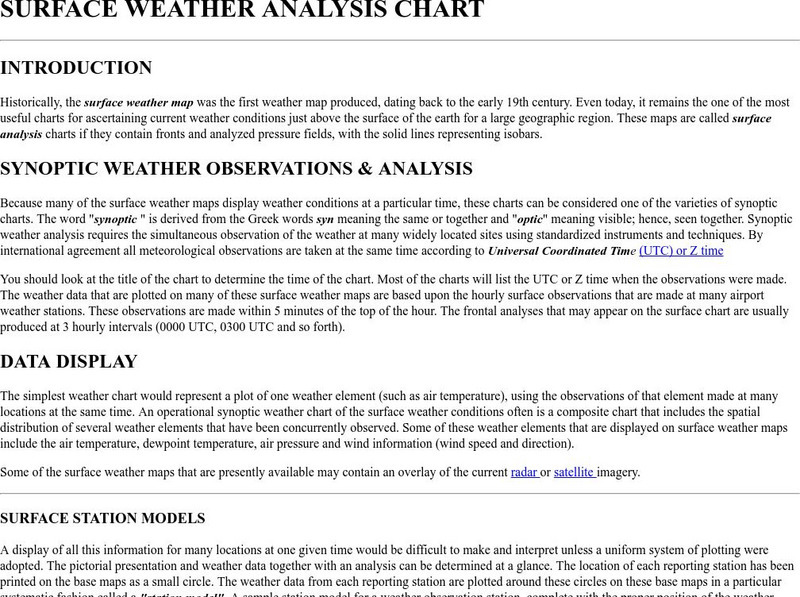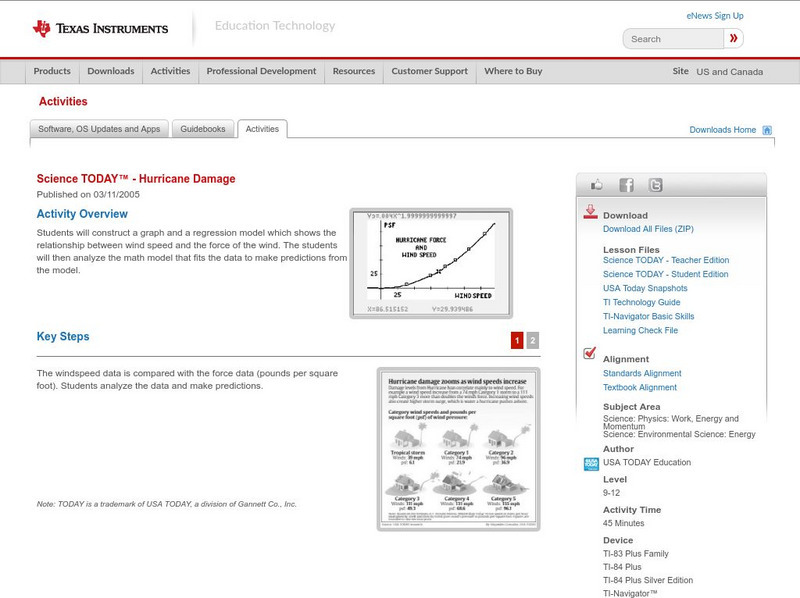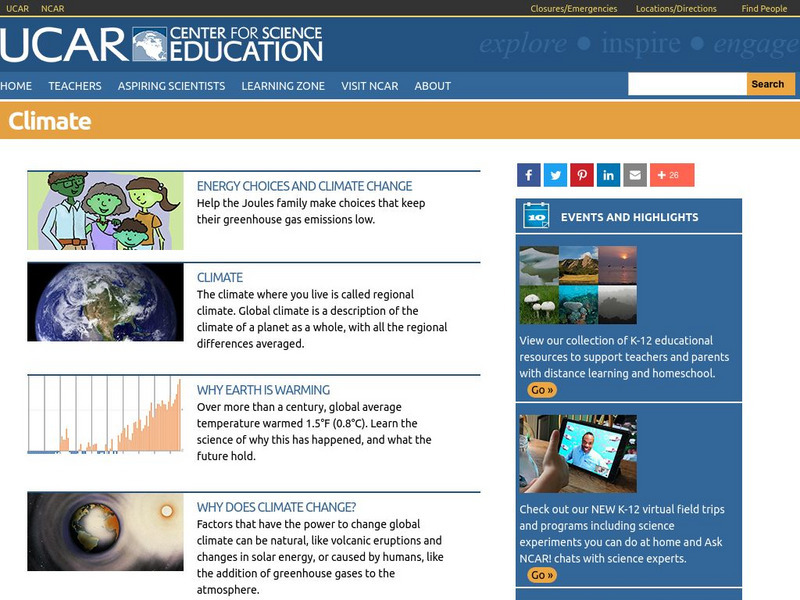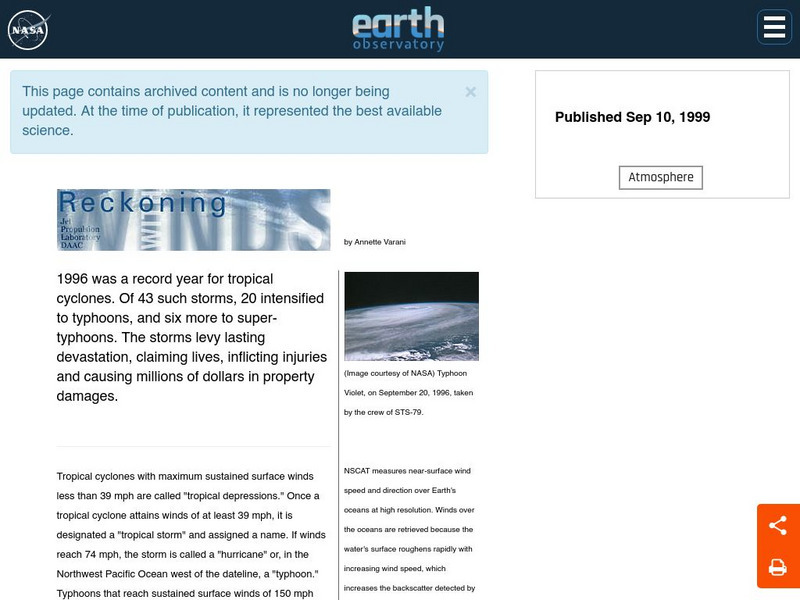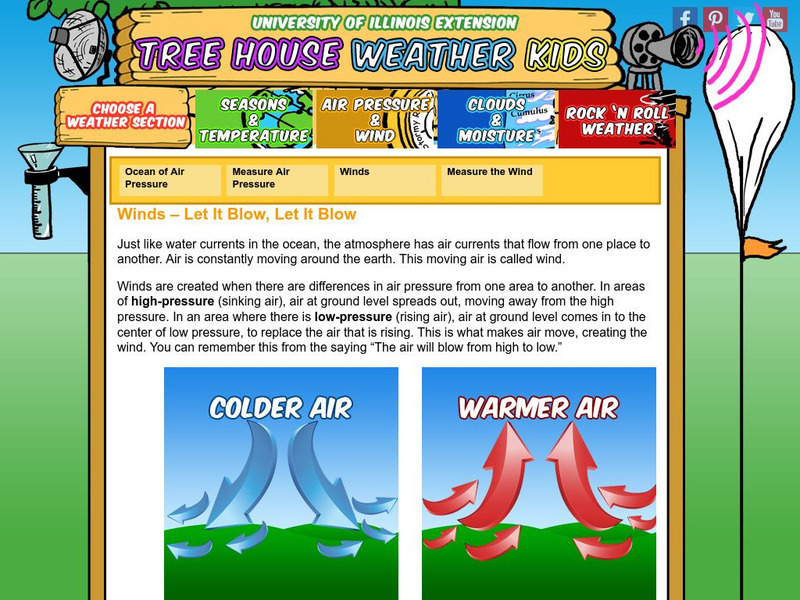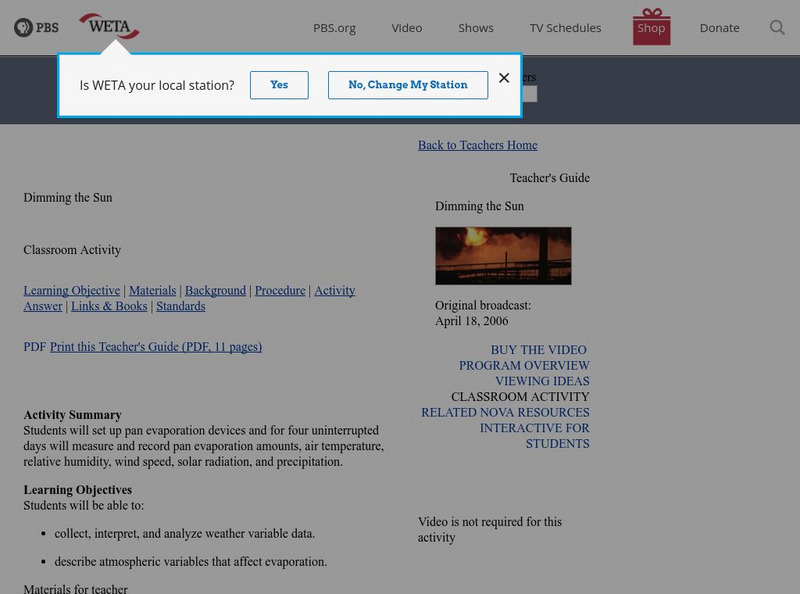E-learning for Kids
E Learning for Kids: Science: Atlantic Ocean: What Is Evaporation?
Explore with Julia how wind speed and temperature affect evaporation rate.
University of Wisconsin
Atmospheric and Oceanic Sciences: Surface Weather Analysis
Explains the use of synoptic weather analysis in preparing weather maps and forecasting. Discusses the use of symbols as well.
Texas Instruments
Texas Instruments: Science Today Hurricane Damage
Students will construct a graph and a regression model which shows the relationship between wind speed and the force of the wind. The students will analyze the math model that fits the data to make predictions from the model.
PBS
Pbs Teachers: South Georgia Island: Wind Chill
Define wind chill, determine the relationship between temperature and wind speed and discuss how humans and animals protect themselves from dangerous wind chill.
University Corporation for Atmospheric Research
Ucar: Introduction to Climate
A detailed overview of the Earth's climate, with explanations about the difference between weather and climate, dendrochronology, palynology, and how Earth's climate has changed over time. All information is reinforced through pictures,...
TeachEngineering
Teach Engineering: Wind Power
In this activity, students develop an understanding of how engineers use wind to generate electricity. They will build a model anemometer to better understand and measure wind speed.
NASA
Nasa Earth Observatory: Reckoning With Winds
An article explaining how severe winds can lead to devastation and destroy homes, land, and injure people. Learn about different typhoons and cyclones and the effects they have had on our land.
TeachEngineering
Teach Engineering: Build an Anemometer
Students create their own anemometers which are instruments for measuring wind speed. They see how an anemometer measures wind speed by taking measurements at various school locations. They also learn about different types of...
University of Illinois
University of Illinois Extension: Tree House Weather Kids: Air Pressure and Wind: Winds: Let It Blow
Animated interactive helps young researchers understand how winds develop.
The Franklin Institute
Franklin Institute Online: Make Your Own Weather Vane
As part of a unit on gathering data about the weather, this lesson features instructions for making a simple weather vane.
Shodor Education Foundation
Shodor Interactivate: A Better Fire!!
Students run a simulation of how a fire will spread through a stand of trees, learning about probability and chaos.
University of Colorado
University of Colorado: Basic Wind Structure
Brief explanations of basic wind structures and terms like: geostropic winds, boundary layer, shear stress, modes of snow transport, and more.
PBS
Pbs Teachers:dimming the Sun
Conduct an experiment and investigate how air temperature, relative humidity, wind speed, solar radiation and precipitation affect evaporation. Graph the data collected during the experiment.
Center of Science and Industry
Cosi Columbus: Paper Cup Anemometer
Make your own anemometer like meteorologists use to measure the speed of wind. Includes full list of materials, procedures, and scientific explanation of what makes wind.
Science Struck
Science Struck: History and Working Principle of the Anemometer
Explains what an anemometer is used for and the different models that have been developed since it was first invented.
Science4Fun
Science4 Fun: Weather
What is weather? Learn how weather is defined by parameters, weather forecasting, and Weather phenomena.



